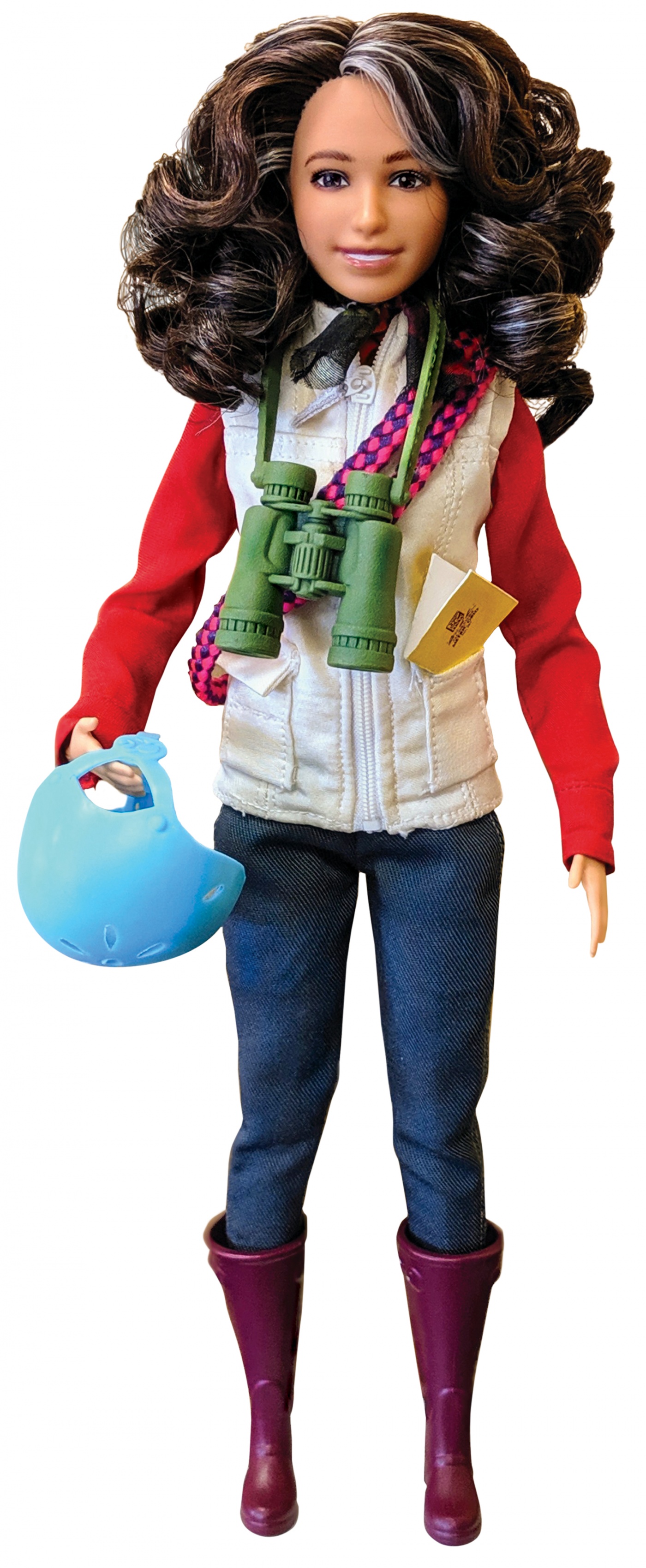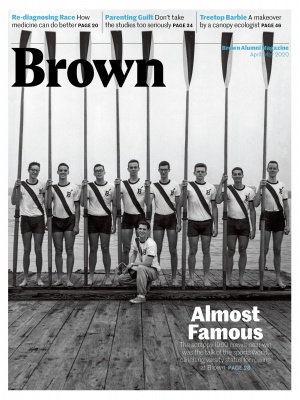Explorer Barbie
Boots made for walking and other amazing accessories
Nalini Nadkarni ’76 is an unlikely candidate for the job of Barbie designer. Growing up, she didn’t even like dolls. Instead, she loved scaling the maple trees outside her family’s home in Maryland—so much so that it ended up becoming her career. Today, the forest ecologist is renowned for her pioneering work studying the rainforest canopy.

Yet even as her work garnered academic acclaim throughout the 1980s, Nadkarni was wondering how to connect with people outside that bubble. The world was finally waking up to the threat of deforestation, and “I felt this personal and professional responsibility to do something more than write my little papers that just scientists read,” she says. “How do I get the attention of people who aren’t already part of the choir I’m preaching to?”
Her idea: TreeTop Barbie, outfitted with a helmet, climbing gear, and a field guide to the flora and fauna of the forest canopy—transforming the classic doll into a fellow intrepid researcher. “Even though I’m not a Barbie person—and I was horrified when my own daughter asked for a Barbie—I thought, ‘Well, I have to practice a little bit of humility here,’” she explains. “Instead of just denigrating the value that Barbie has for little girls, why don’t I piggyback off that with my own values?”
She pitched the idea to Mattel in 2003, but the company wasn’t interested. So she bought used Barbies at Goodwill and, with the help of volunteer seamstresses, created bespoke outfits and sold her TreeTop Barbies at cost. The project caught the attention of a New York Times reporter—at which point Mattel tried to shut Nadkarni down. But she pushed back, finally convincing the company to let her continue producing her Tree-Top Barbies at a small scale; she estimates that about 400 dolls were purchased over 15 years.
Then, in 2018, she received an unexpected call. National Geographic was collaborating with Mattel on a series of Barbies promoting science and exploration—and they wanted Nadkarni to serve as an advisor on the project. Over the course of several months, she reviewed Barbie designs and answered lots of questions about design minutia: Is this butterfly net the right size? Would she be wearing a helmet? Should these boots be over or under the knee? The resulting, scientifically-accurate dolls hit shelves across the country last fall. (Entomologist Barbie, for instance, comes equipped with a laboratory workstation stocked with a microscope, a magnifying glass, and specimen cases.)
“I think what is so significant about it—and really heartening in a way—is that in the 15 years from when I first proposed this to today, society has changed enough that Mattel, with its marketing research, has decided there are enough little girls out there who want to play with a doll that’s about becoming a scientist or an explorer or someone who discovers new things and takes risks,” Nadkarni reflects. “It’s really a wonderful thing that a corporation that seems so intractable has responded to this dynamic of women in science.”
Photo: Megan Young/University of Utah





